Football, a sport loved by millions, demands strength, agility, and endurance. However, the intense physical nature of the game often leads to injuries that can sideline even the most seasoned players.
Understanding the most common football injuries can help athletes, coaches, and fans better prepare for and prevent these setbacks.
From sprains and strains to more severe conditions like concussions and fractures, football injuries vary in type and severity.
This article delves into the ten most common injuries players face on the field, shedding light on their causes, symptoms, and prevention strategies.
Whether you’re a player, coach, or enthusiast, knowing these can keep the game safer and more enjoyable for everyone involved.
10 Most Common Football Injuries
Football players often face various injuries due to the sport’s high-intensity nature.
Here are the 10 most common football injuries.
1. Hamstring Strains
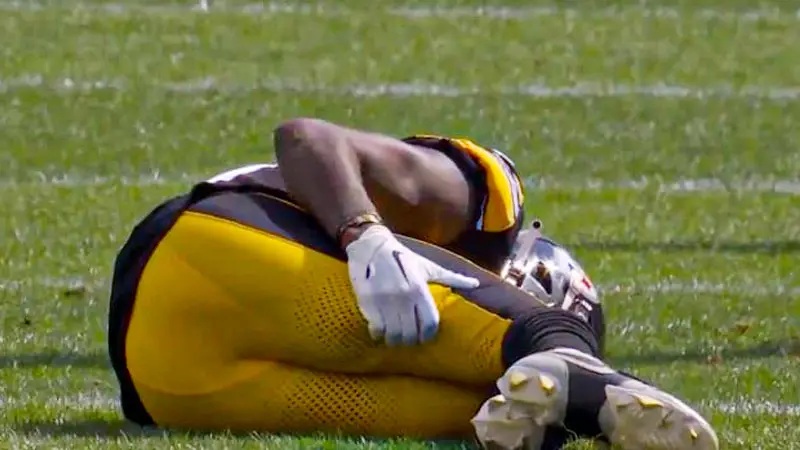
Hamstring strains are common in football due to the sport’s high demands for sprinting and sudden changes in direction.
The hamstring muscles, located at the back of the thigh, are responsible for knee flexion and hip extension. A strain occurs when these muscles are stretched beyond their limits, leading to partial or complete tears.
Symptoms typically include sharp pain in the back of the thigh, difficulty walking, and swelling. Rehabilitation often involves rest, ice, compression, and elevation (R.I.C.E.), along with physical therapy focused on stretching and strengthening the hamstring muscles.
Regularly performing dynamic warm-ups and strengthening exercises can help reduce the risk of future strains.
2. Muscle Strain
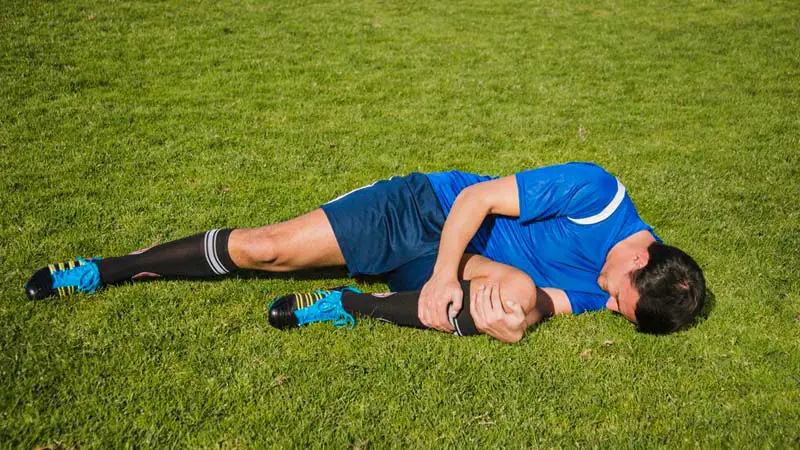
Muscle strains in football commonly affect the quadriceps (front of the thigh) and calf muscles due to sudden bursts of activity and high-impact movements.
These strains occur when muscle fibers are overstretched or torn, resulting in pain, muscle spasms, and weakness.
Players might experience difficulty moving the affected muscle and tenderness when touched. Treatment generally involves R.I.C.E., along with stretching and strengthening exercises.
Adequate warm-ups, gradual increases in activity intensity, and proper conditioning are crucial to prevent muscle strains.
Ligament tears, especially in the knees and ankles, are another prevalent injury in football. These often occur due to twisting motions or direct contact. Symptoms can include swelling, instability, and a popping sensation at the time of injury.
Treatment may range from rest and physical therapy to surgical intervention in severe cases. Proper footwear, using braces, and implementing injury prevention programs can help reduce the risk of ligament tears.
3. Knee Ligament Injuries
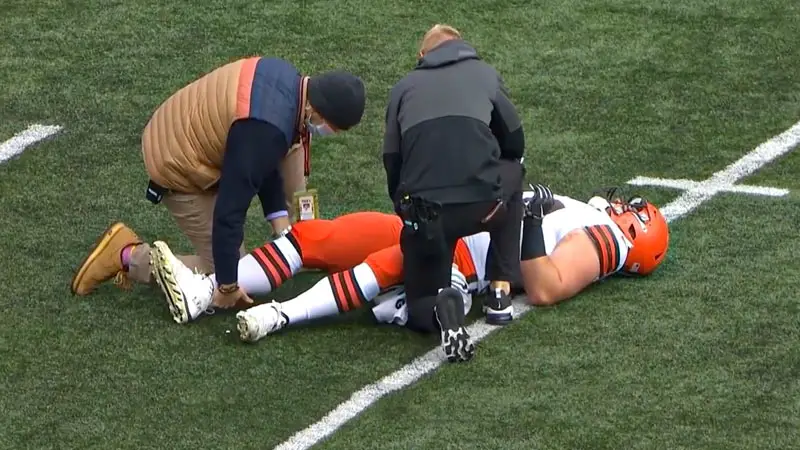
Knee ligament injuries, such as those affecting the anterior cruciate ligament (ACL), medial collateral ligament (MCL), and posterior cruciate ligament (PCL), are significant due to the knee’s role in stability and movement.
Injuries often result from sudden twists, turns, or direct impacts to the knee. Symptoms can include severe pain, swelling, and a feeling of instability or “giving way” of the knee.
ACL tears, in particular, may require surgical reconstruction and extensive rehabilitation. Preventative measures include strengthening exercises for the legs and core, proper technique during tackles, and wearing supportive knee braces.
4. Rotator Cuff Strains
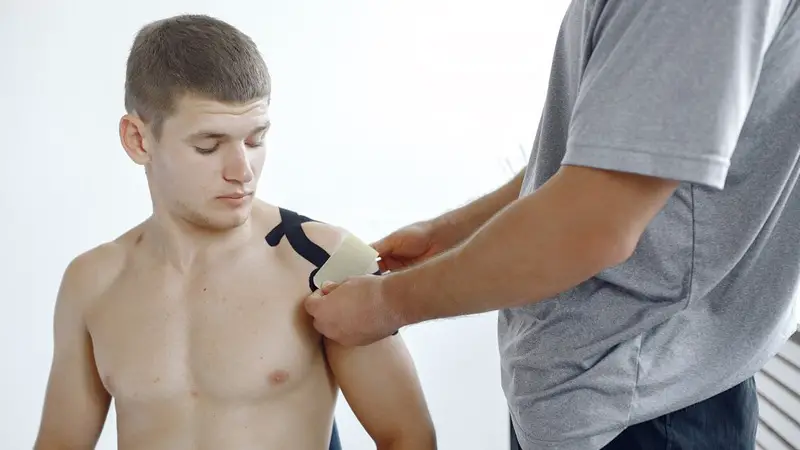
The rotator cuff is a group of muscles and tendons stabilizing the shoulder joint. Strains occur from repetitive overhead activities, such as throwing or tackling, leading to pain, weakness, and reduced range of motion in the shoulder.
Players might also experience difficulty lifting their arm or performing routine movements. Treatment involves rest, ice, anti-inflammatory medications, and physical therapy focusing on shoulder strengthening and flexibility.
To prevent rotator cuff injuries, players should incorporate shoulder strengthening exercises into their training regimen and use proper technique when performing overhead movements.
Additionally, wearing appropriate protective gear can provide extra support to the shoulder area. Regular checks by a physiotherapist can help catch early signs of strain and prevent long-term damage.
5. Ankle Sprain
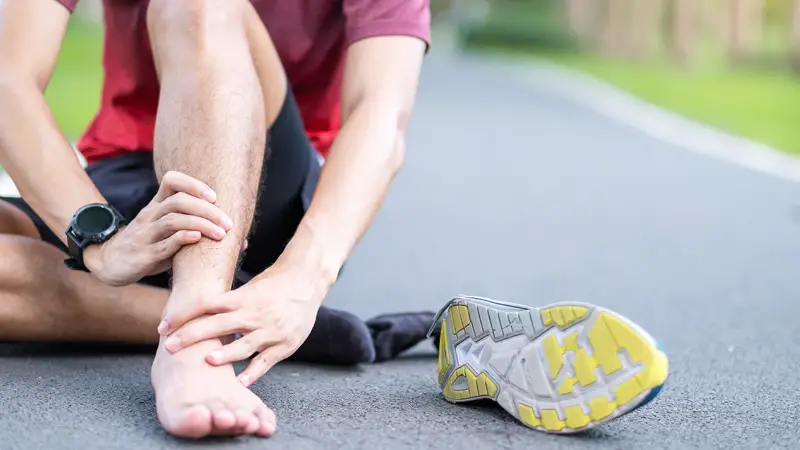
Ankle sprains are frequent in football due to sudden directional changes and physical contact. They occur when the ligaments surrounding the ankle are overstretched or torn, typically from rolling or twisting the ankle.
Symptoms include immediate pain, swelling, bruising, and difficulty bearing weight. Treatment includes R.I.C.E., along with ankle exercises and possibly bracing to support healing.
To prevent ankle sprains, players should focus on ankle strengthening exercises, proper footwear, and technique adjustments to avoid awkward landings.
Another prevalent injury is a hamstring strain, often caused by rapid acceleration or deceleration. This injury involves a tear in the hamstring muscles and can lead to sharp pain, swelling, and difficulty with walking or running.
6. Achilles Tendonitis
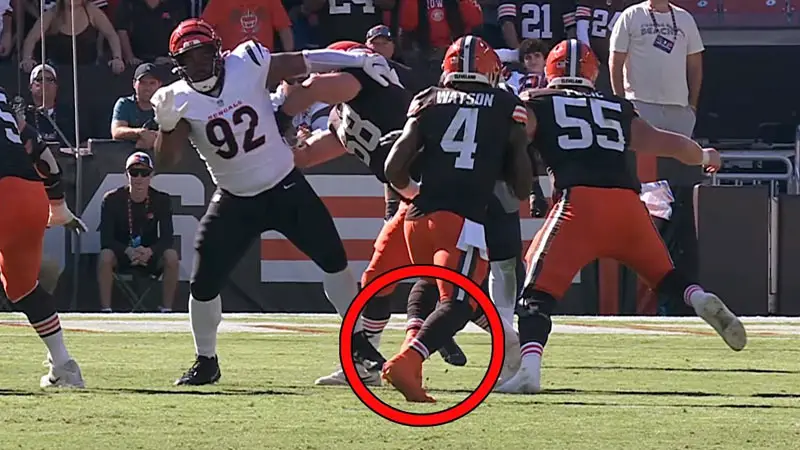
Achilles tendonitis is characterized by inflammation of the Achilles tendon, which connects the calf muscles to the heel bone.
This injury often arises from overuse or sudden increases in activity, causing pain and stiffness at the back of the heel.
Treatment typically involves rest, ice, stretching exercises, and gradual return to activity. Preventative measures include proper warm-ups, gradual intensity increases, and exercises that strengthen the calf muscles and improve flexibility.
Another prevalent injury is Anterior Cruciate Ligament (ACL) tears, often resulting from sudden changes in direction or awkward landings. This injury can lead to significant pain, swelling, and instability in the knee.
7. Jumper’s Knee
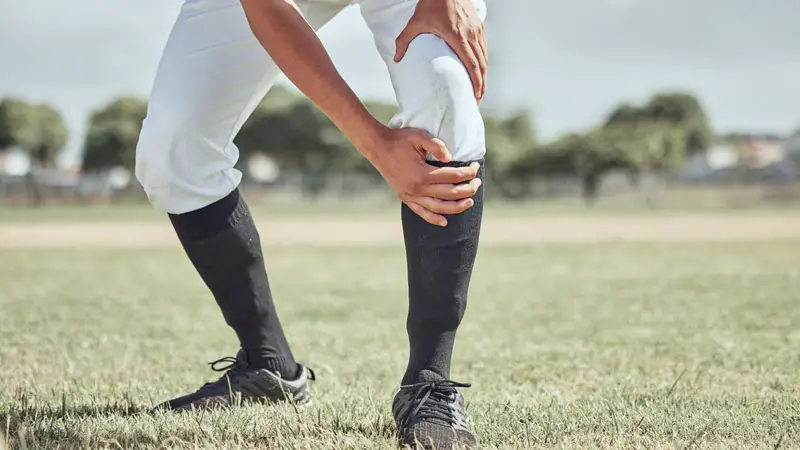
Jumper’s knee, or patellar tendinitis, is inflammation of the patellar tendon, which attaches the kneecap to the shinbone.
This condition is prevalent in sports requiring repetitive jumping or running, leading to knee pain and tenderness around the patellar tendon.
Treatment involves rest, ice, physical therapy focusing on strengthening the quadriceps and hamstrings, and avoiding activities that exacerbate the pain.
Preventing jumper’s knee includes proper conditioning and stretching to maintain flexibility and strength in the knee area.
Another frequent injury is the hamstring strain, which occurs when the muscles on the back of the thigh are overstretched or torn. This can result in sudden pain, swelling, and difficulty walking.
Treatment typically includes rest, ice application, compression, and rehabilitation exercises that emphasize gradual strength rebuilding and flexibility. Preventative measures involve proper warm-ups and regular stretching to enhance muscle resilience.
8. Shin Splints
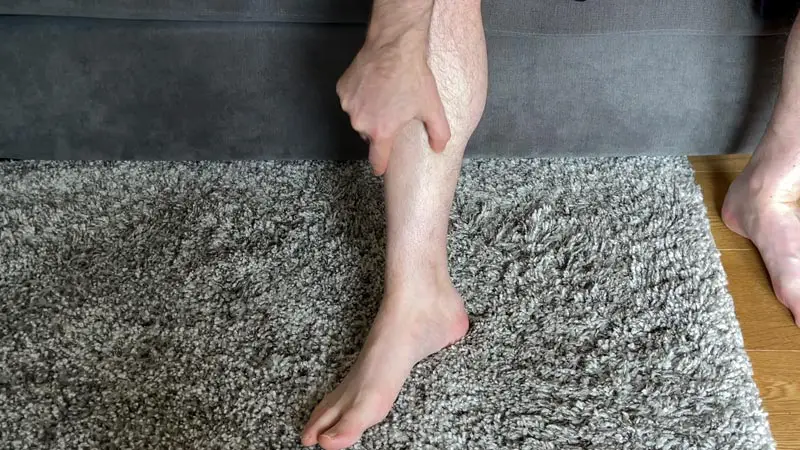
Shin splints are a common condition where pain occurs along the shinbone (tibia) due to overuse or stress on the lower leg muscles and tissues.
Symptoms include tenderness, aching, and throbbing along the inner side of the shin. Treatment typically involves rest, ice, and over-the-counter pain relievers.
To prevent shin splints, players should ensure proper footwear, gradually increase activity levels, and incorporate strengthening and flexibility exercises for the lower legs.
Another frequent injury is the ankle sprain, which occurs when the ligaments around the ankle are stretched or torn due to sudden twists or rolls. Symptoms include swelling, bruising, and pain.
Treatment often consists of rest, ice, compression, and elevation (RICE), along with physical therapy to restore movement and strength.
Proper warm-ups, balance training, and wearing supportive footwear are key strategies for prevention.
9. Metatarsal Stress Fractures

Metatarsal stress fractures are tiny cracks in the metatarsal bones of the foot, often caused by repetitive stress or overuse.
Players may experience sharp pain in the forefoot, especially during activity, which can worsen over time. Treatment includes rest, immobilization, and potentially wearing a special shoe or boot to support the foot.
To prevent these fractures, players should gradually increase training intensity, wear supportive footwear, and ensure proper foot mechanics during activities.
Additionally, incorporating strength and flexibility exercises can help in maintaining foot health. Monitoring training loads and allowing adequate recovery time between sessions are also crucial strategies to avoid metatarsal stress fractures.
10. Concussions
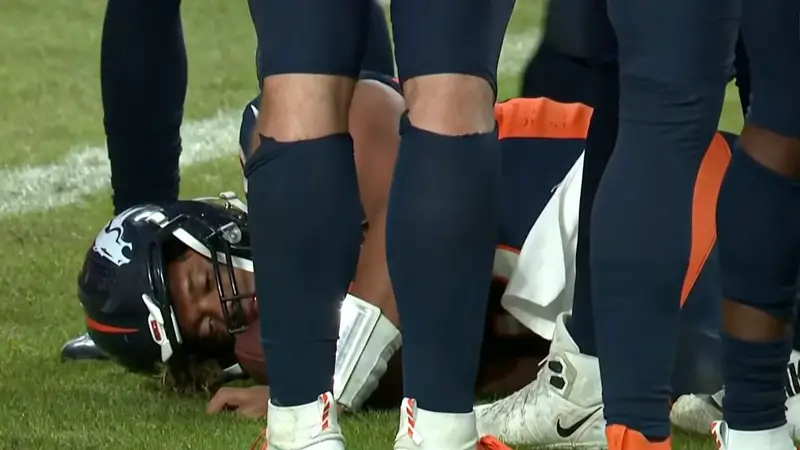
Concussions are traumatic brain injuries caused by a blow to the head or a jarring impact that shakes the brain inside the skull.
Symptoms include headaches, dizziness, confusion, nausea, and sometimes loss of consciousness. Treatment involves rest and avoiding activities that could exacerbate symptoms.
Return-to-play protocols require players to be symptom-free and cleared by a medical professional before resuming activity.
To reduce concussion risk, players should use appropriate protective headgear, employ proper tackling techniques, and follow safety guidelines.
ACL injuries occur when the anterior cruciate ligament is torn or sprained, often due to sudden stops, pivots, or awkward landings. Symptoms include severe pain, swelling, and instability in the knee.
How to Prevent Injuries While Playing American Football
Here are the steps to prevent injuries while playing football:
Warm Up and Stretch
Start every practice and game with a proper warm-up. This includes dynamic stretches, light jogging, and specific drills to increase blood flow and loosen muscles. Spend at least 10-15 minutes warming up to reduce the risk of strains and sprains.
Wear Proper Equipment
Ensure all players wear the correct gear, including helmets, pads, mouthguards, and cleats. Regularly check for proper fit and wear and tear. Proper equipment offers essential protection against high-impact collisions and falls.
Practice Good Technique
Emphasize proper tackling, blocking, and hitting techniques. Coaches should regularly review and correct players’ form to minimize undue stress on the body. Good technique not only improves performance but also reduces injury risk.
Stay Hydrated
Encourage players to drink water before, during, and after activities. Dehydration can lead to muscle cramps and increase the likelihood of injuries. Make hydration a priority, particularly during hot weather.
Build Strength and Flexibility
Incorporate strength and conditioning programs tailored to football players. Focus on core strength, leg muscles, and flexibility training. Stronger, more flexible muscles can better withstand the physical demands of the game.
Know Your Limits
Teach players to recognize symptoms of fatigue and overexertion. Avoid pushing beyond their physical limits. Rest is crucial for recovery and preventing overuse injuries.
Use Proper Field Conditions
Inspect the field for hazards such as holes, debris, and uneven surfaces before play. Proper field maintenance can prevent trips and falls that lead to injuries.
Follow Recovery Protocols
Adhere to recommended recovery timelines and rehabilitation exercises for previous injuries. Rushing back to play too soon can exacerbate injuries and lead to chronic issues. Follow medical advice strictly.
Educate About Concussion Signs
Educate players and coaches about the signs and symptoms of concussions. Immediate recognition and proper management of concussions are vital. Ensure protocols for concussion assessment and return-to-play guidelines are in place.
Regular Medical Check-ups
Schedule regular physical exams and medical check-ups for players. Early detection of potential health issues can prevent serious injuries. A healthcare professional can provide personalized advice and updates on a player’s health status.
Frequently Asked Questions
How can football players prevent injuries?
Football players can prevent injuries by warming up properly, wearing proper equipment, practicing good techniques, staying hydrated, building strength and flexibility, knowing their limits, using proper field conditions, and following recovery protocols.
Why are knee injuries so common in football?
Knee injuries are common in football because the sport involves sudden changes in direction, jumping, and heavy physical contact, which put tremendous stress on the knee joints.
What is a concussion and why is it dangerous?
A concussion is a brain injury caused by a blow to the head that forces the brain to move rapidly within the skull. It is dangerous because it can lead to serious long-term health issues if not treated properly.
How important is proper equipment in preventing football injuries?
Proper equipment is crucial in preventing football injuries. Wearing well-fitted helmets, pads, and supportive footwear can significantly reduce the risk of serious injuries.
What role does conditioning play in injury prevention?
Conditioning plays a vital role in injury prevention by improving muscle strength, flexibility, and endurance, which helps players withstand the physical demands of the game.
Conclusion
Football, while exhilarating and physically demanding, poses a significant risk of injuries due to its high-impact nature.
Understanding common football injuries, such as hamstring strains, knee ligament tears, and concussions, is crucial for players, coaches, and enthusiasts.
These injuries not only affect performance but can also have long-term health implications if not properly managed.
Preventative measures, including proper warm-ups, wearing appropriate gear, and focusing on technique and conditioning, are essential in minimizing injury risks.
Educating players on the importance of hydration, recognizing symptoms of overexertion, and following strict recovery protocols can further safeguard their well-being.
By prioritizing safety and adopting these strategies, the game can be enjoyed more fully, allowing players to perform at their best while reducing the chances of being sidelined by injury.
A commitment to prevention ensures that football remains a thrilling and sustainable sport for everyone involved.

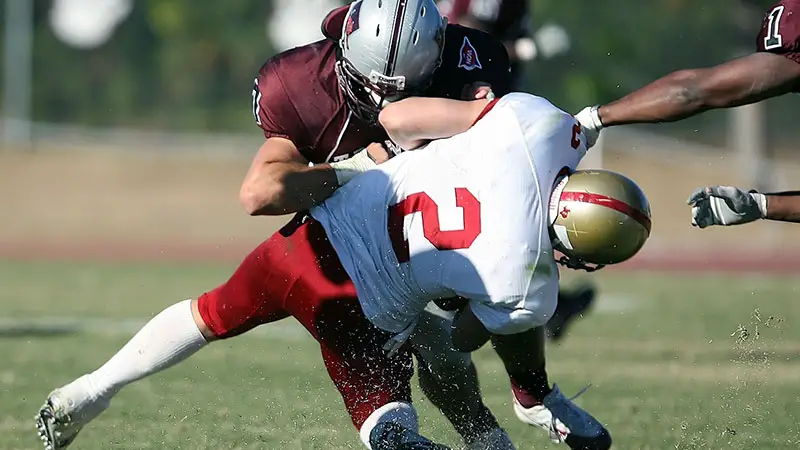



Ashley Hopkinson